

SOUTHEAST
March 2008

1 of 3


SOUTHEAST
March 2008


1 of 3
Once more to the South in Spring:
Arise! ye Noble Herper, from Jersey’s dormant slumber,
to seek in Carolina, first serpents of the season.
And there, behold thy destiny
―
Coluber constrictor constrictor.
Well, what did you expect, an Indigo?
Actually, this particular snake displayed behavior I had previously seen in Indigos, but never before in a Racer.
It’s late March in North Carolina, where my brother lives, the start of what has become my annual trip to
volunteer with Rattlesnake research projects in South Carolina. Ron is unable to join me this time, so I stop off en
route for a weekend of NC herping with him.
Start off in Durham by checking out a couple of tin sites in the early morning. Overnight lows had been cold, but
now it’s sunny and I expect something to be on the surface as the day warms up. It’s my first time in the field since
last summer, and somehow I know the season will begin with a Racer.
When I flip a sheet of tin and the inevitable occurs, I’m not surprised, but then the snake does something I don’t
expect. Instead of staying still or streaking away, it begins to slowly crawl back and forth, making no attempt to
escape. First it noses around the base of the upright tin, as if searching for an opening to the other side, but when the
snake finds an opportunity to squeeze through, it just pulls back and continues to move about. Sometimes it heads
away from me and the tin, with nothing to stop it from disappearing into the open field. But then the Racer
mysteriously doubles back, cautiously crawling in circles, never moving more than a few feet from where it had been
disturbed.
At first I think the snake hasn’t noticed me, and is therefore not startled enough to flee. But if I make a move, the
tail vibrates and the Racer faces me, recoiling into a lateral S, obviously reacting to my presence. And then it puts on
the Indigo display. Raising the upper third of its body, the Racer flares its neck vertically and presents itself sideways
to emphasize its expanded profile, just I have seen in the past with Drymarchon, but never before with Racers.
Interestingly enough, after all these years of finding Racers without observing this behavior, the following
morning I witness the same unhurried crawling around in circles and elevated neck-flaring when I flip another
Coluber, this time when the weather is even cooler. I wonder if this response is linked to lower temperatures; perhaps
the snakes sense they don’t have sufficient energy to make a quick escape, and so they rely on a defensive display
instead of flight? Whatever the reason, I am fascinated, and extremely gratified to discover something new about a
species I’ve seen so often, and have frequently taken for granted. My apologies to Racers everywhere.
In the afternoon Ron and I go to explore the Uwharries, an isolated range of small mountains in central North
Carolina. We are met there by Mitch Mimier, a local resident who generously introduces us to his region of the
Piedmont. Besides being a first-rate field herper and all-around nice guy, Mitch is an excellent photographer. He also
knows where the good BBQ is.
Mitch takes us for a late-day hike along railroad tracks that often produce Rattlesnakes, Ratsnakes, and
Kingsnakes for him, but this afternoon we find only (can you guess?) Racers, although Ron does spot a Fence Lizard
riding the rails.
We climb the bluffs beside the tracks, hoping to find a horridus coiled among the boulders on the steep slope. As
Mitch is coming down he glances in a crevice and catches a glimpse of pattern, which turns out to be a juvenile Corn
Snake. It occurs to me later that this is the first time I’ve ever seen a Corn Snake in a montane outcropping, hiding in
habitat more associated in my mind with Rat Snakes and Timber Rattlesnakes. Again, a new discovery about a
familiar species, which helps make the outing successful, despite the lack of target species.
While Ron and Mitch are off climbing the hillside, I’m sitting at the base of the rocks when I hear a rustle in the
dry leaves on the ground. Not quite the scurrying sound of a mouse or a bird or a lizard, it’s something smaller and
more delicate. I get up to investigate, and I’m treated to the sight of a Luna Moth emerging from the leaf litter.
When Luna Moth larva are ready to pupate in the fall, they come down from the trees where they have been
feeding, and then spin their cocoon in a loose wrapping of leaves on the forest floor. In spring the transformed moths
break out of their cocoons, rising from beneath the leaf litter, and crawling towards the closest tree. They climb the
trunk, and there they rest to expand and harden their shriveled wings, long compressed within the cocoon, until they
are ready to fly.
I watched the procession as the moth makes its way across the leaves, then climbs the trunk to ornament a tree
―
solitary, ephemeral, and exquisite.
OK, back to Racers. The following day is cold, cloudy, and windy, not a chance we’ll find a thing. Go down to
the NC sand hills, hit a few tin sites, figuring it’s mostly a reconnaissance mission for future trips. We do manage to
flip a few small guys, see some nice birds.
Nevertheless, despite temperatures nearly in the 40s, and me herping in my winter fleece, I feel confident we can
still count on Racers to make an appearance. After all, it is the South in Spring.
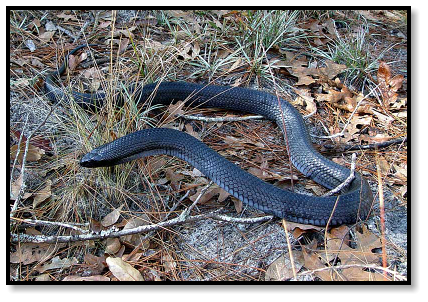
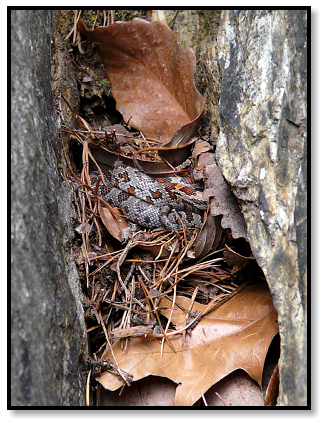
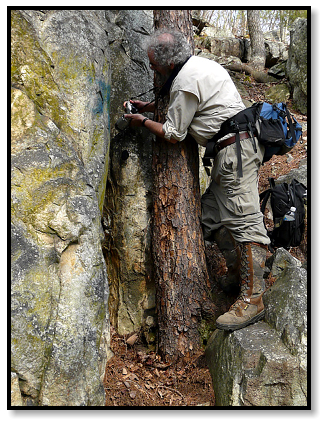
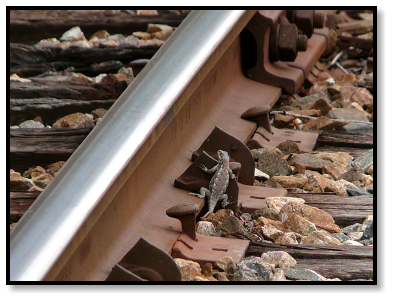
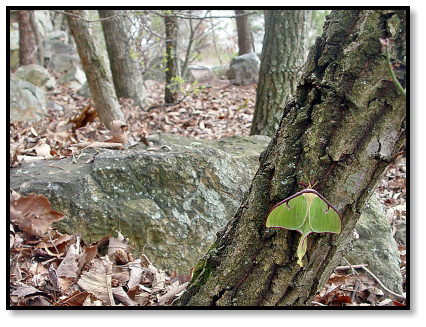
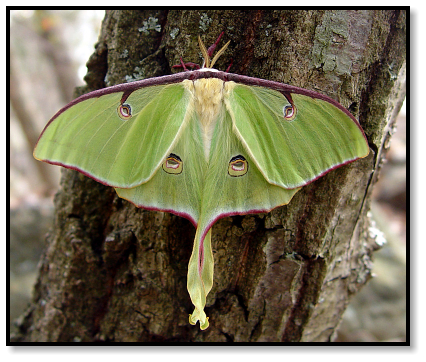
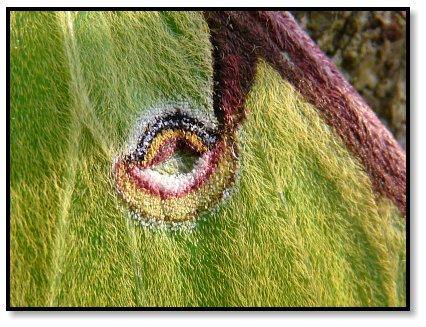
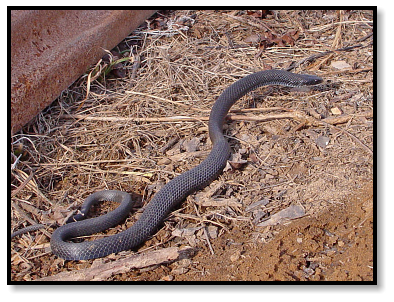
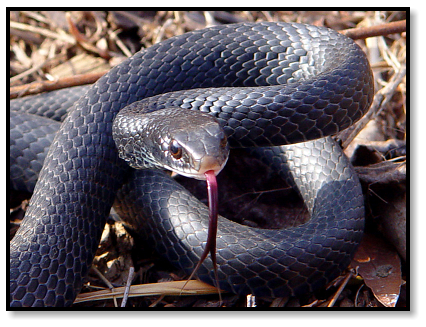
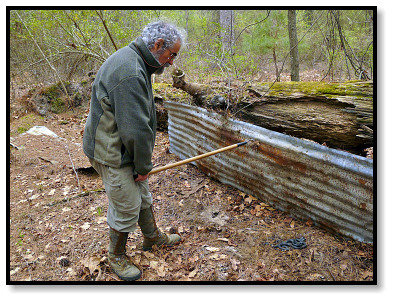
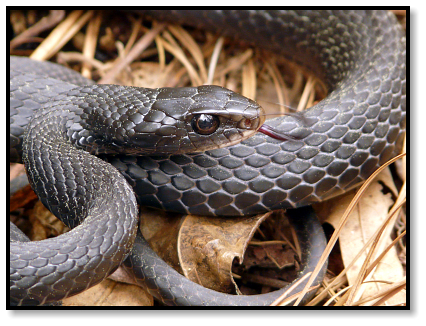
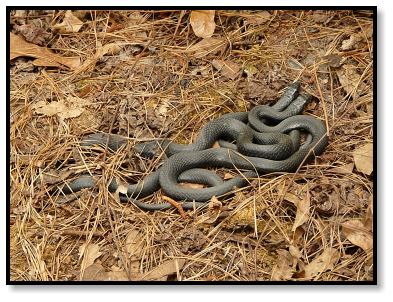
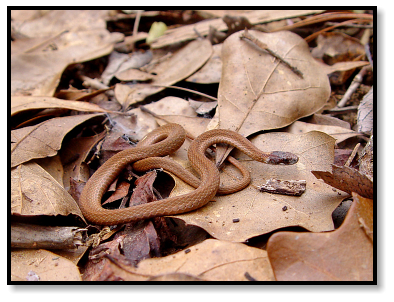
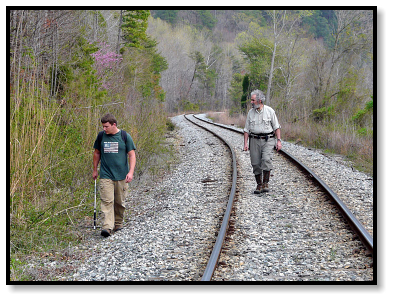
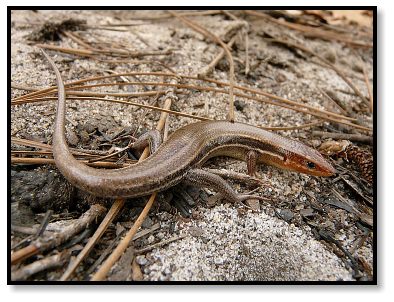
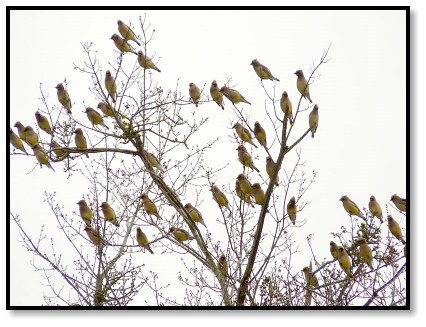
Northern Black Racer
Coluber constrictor constrictor
Eastern Indigo
Drymarchon corais couperi
From an earlier trip, presented for comparison
Eastern Fence Lizard
Sceloporus undulatus
Corn Snake
Elaphe guttata
Southeastern Five-Lined Skink
Eumeces inexpectatus
Red-bellied Snake
Storeria occipitomaculata







